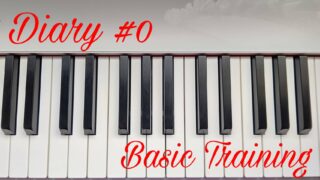TOEFL ibt リーディングテストのスコアを改善するには…
自分も、リーディング問題に苦戦したことがありますが、
一番の対策は、多読をすること。
このシリーズでは、リーディング対策用の設問も合わせて
様々なトピックでリーディング練習が出来るようにしております。
ぜひ、活用して、自身のスコアアップを目指して下さい。
本文
Title: Sparta vs. Athens: The Battle for the Ancient World
In ancient Greece, two prominent city-states, Sparta and Athens, emerged as powerful forces. These two city-states, although geographically close, represented distinct approaches to governance, society, and culture. Their differences often led to intense rivalries and conflicts, shaping the course of ancient Greek history.
Sparta: The Warrior Society
Sparta was known for its militaristic society. The state’s primary concern was producing exceptional warriors. Male citizens were subjected to rigorous military training from a young age, focusing on discipline, physical prowess, and combat skills. The Spartan phalanx, a formation of heavily armored soldiers with long spears and shields, was renowned for its effectiveness in battle.
Sparta’s political system was characterized by an oligarchy, where a small group of aristocrats, known as the Gerousia, held significant power. A dual monarchy, consisting of two kings, also played a role. Although the majority of citizens had limited political participation, the system aimed to maintain a stable and militaristic society.
Athens: The Birthplace of Democracy
Athens, on the other hand, is often hailed as the birthplace of democracy. The city-state introduced a system where citizens had a voice in decision-making through an assembly known as the Ekklesia. While not all residents of Athens enjoyed citizenship, this innovation marked a significant step toward inclusive governance.
Athenian culture flourished, with remarkable achievements in philosophy, literature, art, and architecture. Prominent figures like Socrates, Plato, and Aristotle laid the groundwork for Western philosophy, while playwrights like Aeschylus, Sophocles, and Euripides produced timeless dramas. Athens also constructed monumental structures such as the Parthenon, which remains an iconic symbol of classical architecture.
Conflict and Cooperation
Sparta and Athens clashed in the Peloponnesian War (431-404 BCE), a protracted conflict that significantly weakened both city-states. Sparta, with its military might, allied with other Greek states to challenge the Athenian naval empire. The war ended with the defeat of Athens and a temporary ascendance of Spartan influence in Greece.
However, the rivalry between Sparta and Athens was not solely defined by conflict. During the Greco-Persian Wars in the early 5th century BCE, the two city-states, along with other Greek states, united to repel the invading Persian Empire. This period showcased the ability of Greek city-states to cooperate in the face of external threats.
Despite their differences, Sparta and Athens left enduring legacies. Sparta’s military discipline and Athens’ contributions to democracy and culture continue to influence contemporary societies. The dynamic between these two ancient city-states serves as a rich source of historical study, offering insights into the complexities of governance, society, and human ambition.
設問
- Which city-state in ancient Greece was known for its militaristic society and rigorous military training?
A) Athens
B) Corinth
C) Sparta
D) Thebes - What formation were Spartan soldiers known for in battle?
A) Archers
B) Cavalry
C) The phalanx
D) The chariot - What type of political system did Sparta have?
A) Monarchy
B) Democracy
C) Oligarchy
D) Autocracy - Who held significant power in Sparta’s political system?
A) The Ekklesia
B) The Gerousia
C) The Athenian assembly
D) The Persian Empire - Which city-state is often considered the birthplace of democracy?
A) Corinth
B) Sparta
C) Athens
D) Thebes - What allowed citizens in Athens to have a voice in decision-making?
A) The oligarchy
B) The Gerousia
C) The phalanx
D) The Ekklesia - Which Athenian structure is a renowned symbol of classical architecture?
A) The Parthenon
B) The Acropolis
C) The Colosseum
D) The Temple of Artemis - What field of philosophy is Socrates associated with?
A) Ethics
B) Medicine
C) Mathematics
D) Engineering - Which conflict pitted Sparta against Athens and weakened both city-states?
A) The Greco-Persian Wars
B) The Punic Wars
C) The Peloponnesian War
D) The Persian Wars - What did the Peloponnesian War lead to for Athens?
A) A temporary ascendance of power
B) A strengthened naval empire
C) A permanent alliance with Sparta
D) A flourishing cultural era
解答・解説
- 古代ギリシャにおいて、どの都市国家がその軍事主義の社会と厳格な軍事訓練で知られていましたか?
A) アテネ
B) コリントス
C) スパルタ
D) テーベ
正解: C) スパルタ
説明: スパルタはその軍事的な特性と苛酷な軍事訓練で知られています。 - 戦闘でスパルタの兵士はどのような陣形で知られていましたか?
A) 弓兵
B) 騎兵
C) ファランクス
D) 戦車
正解: C) ファランクス
説明: スパルタの兵士は、ファランクスと呼ばれる重装歩兵の陣形で有名でした。 - スパルタの政治体制はどのようなものでしたか?
A) 君主制
B) 民主制
C) 寡頭政治
D) 独裁政治
正解: C) 寡頭政治
説明: スパルタは寡頭政治を特徴としていました。少数の貴族層、ジェロウシアと呼ばれる人々が重要な権力を握っていました。 - スパルタの政治体制において、どのグループが重要な権力を持っていましたか?
A) エクレシア(アテネの議会)
B) ジェロウシア(スパルタの寡頭政治の一部)
C) アテネの議会
D) ペルシャ帝国
正解: B) ジェロウシア(スパルタの寡頭政治の一部)
説明: ジェロウシアはスパルタの寡頭政治の一部で、重要な権力を持っていました。 - どの都市国家がしばしば民主主義の発祥地と考えられていますか?
A) コリントス
B) スパルタ
C) アテネ
D) テーベ
正解: C) アテネ
説明: アテネは民主主義の発祥地とされています。 - アテネの市民が意思決定に参加できるようにしたのは何でしょうか?
A) 寡頭政治
B) ジェロウシア
C) ファランクス
D) エクレシア
正解: D) エクレシア
説明: アテネの市民はエクレシア(議会)を通じて意思決定に参加できました。 - 古典建築の象徴とされるアテネのどの建造物がありますか?
A) パルテノン神殿
B) アクロポリス
C) コロシアム
D) アルテミス神殿
正解: A) パルテノン神殿
説明: パルテノン神殿は古典建築の象徴とされ、アテネにあります。 - 哲学の分野でソクラテスは何に関連付けられていますか?
A) 倫理学
B) 医学
C) 数学
D) 工学
正解: A) 倫理学
説明: ソクラテスは倫理学に関連づけられています。 - どの紛争がスパルタとアテネを対立させ、両都市国家を弱体化させましたか?
A) ギリシャ・ペルシャ戦争
B) ポエニ戦争
C) ペロポネソス戦争
D) ペルシャ戦争
正解: C) ペロポネソス戦争
説明: ペロポネソス戦争はスパルタとアテネを対立させ、両都市国家を弱体化させました。
- ペロポネソス戦争はアテネに何をもたらしましたか?
A) 一時的な権力の上昇
B) 強化された海洋帝国
C) スパルタとの永続的な同盟
D) 繁栄する文化的時代
正解: A) 一時的な権力の上昇
説明: ペロポネソス戦争はアテネに一時的な権力の上昇をもたらしました。
本文の日本語訳
タイトル:スパルタ対アテネ:古代世界の争い
古代ギリシャでは、スパルタとアテネという2つの有力な都市国家が力強く台頭しました。これら2つの都市国家は地理的には近接していましたが、統治、社会、文化における異なるアプローチを象徴していました。彼らの違いはしばしば激しい対立と紛争につながり、古代ギリシャの歴史の進路を形作りました。
スパルタ:戦士の社会
スパルタはその軍事的な社会で知られていました。国家の主要な関心事は優れた戦士を育てることでした。男性市民は若い頃から厳格な軍事訓練を受け、規律、身体的な力量、戦闘スキルに焦点を当てました。スパルタのファランクスは、長い槍と盾を持つ重装兵士の陣形で、その効果的な戦闘で有名でした。
スパルタの政治システムは寡頭政治であり、ジェロウシアとして知られる少数の貴族が重要な権力を持っていました。2人の王から成る二重君主制も存在しました。市民の大多数は政治的な参加が制限されていましたが、この制度は安定した軍事社会を維持することを目的としていました。
アテネ:民主主義の発祥地
一方、アテネはしばしば民主主義の発祥地として称賛されています。この都市国家は市民がエクレシアとして知られる議会を通じて意思決定に参加できるシステムを導入しました。アテネのすべての住民が市民権を楽しんでいたわけではありませんでしたが、この革新は包括的な統治への重要な一歩でした。
アテネの文化は、哲学、文学、美術、建築の優れた成果で栄えました。ソクラテス、プラトン、アリストテレスといった著名な人物は西洋哲学の基盤を築き、アイスキュロス、ソフォクレス、エウリピデスなどの劇作家は不朽のドラマを制作しました。アテネはまた、パルテノン神殿などの記念碑的な建造物を建設し、古典的な建築の象徴となっています。
対立と協力
スパルタとアテネはペロポネソス戦争(紀元前431-404年)で衝突し、両都市国家を大きく弱体化させる長引く紛争に巻き込まれました。スパルタはその軍事力を背景に、他のギリシャ都市国家と連携してアテネの海洋帝国に挑みました。戦争はアテネの敗北と、一時的なスパルタの影響力の高まで終わりました。
しかし、スパルタとアテネの対立は紛争だけで定義されるものではありませんでした。紀元前5世紀初頭のギリシャ・ペルシャ戦争では、2つの都市国家と他のギリシャ都市国家が協力して侵略的なペルシャ帝国を撃退しました。この時期は外部の脅威に対処する際にギリシャ都市国家が協力する能力を示しました。
スパルタとアテネの違いにもかかわらず、両都市国家は永続的な遺産を残しました。スパルタの軍事的規律とアテネの民主主義と文化への貢献は、現代社会にも影響を与え続けています。これら2つの古代都市国家の間のダイナミクスは、統治、社会、人間の野心の複雑さに関する歴史的研究の豊かな源として機能しています。
次の問題
[広告]
確かな英語力は、日々の継続から。
その継続を後押しする、第二言語習得理論に基づいた
オンライン英語学習プログラムがあります。
英語を使う人のための、確実なスキルアップが望める
7日間の無料体験はこちらから!

TOEFL ibt ライティング対策も、
あるテクノロジーを活用すれば、一発解決!
自分1人でも、ライティングは対策出来る時代に。
英会話を始めてみたいけれど、どのサービスが良いか分からない…
そんな方は、まず、この記事で3つのサービスを比べてみてはいかがでしょうか?
英語力を効率良く伸ばすことができるサービス3選です。



-320x180.jpg)


-320x180.jpg)

-320x180.jpg)



-120x68.jpg)

コメント